The Defense Department announced on Dec. 7 that six Guantanamo detainees had been transferred to Uruguay. Four of the six are citizens of Syria, one is a Tunisian, and the sixth is from the Palestinian-controlled territories.
In its final recommendations, issued in January 2010, President Obama’s Guantanamo Review Task Force recommended that all six be transferred “to a country outside the United States that will implement appropriate security measures.”
Prior to the establishment of the task force in early 2009, Joint Task Force Guantanamo (JTF-GTMO), which oversees the detention facilities in Cuba, wrote threat assessments for all six of the now former detainees. The threat assessments were subsequently leaked online.
JTF-GTMO deemed five of six to be “high” risks, who are “likely to pose a threat to the US, its interests, and allies.” Only one was determined to be a “medium” risk, “as he may pose a threat to the US, its interests, and allies.”
Interestingly, the intelligence contained in JTF-GTMO’s files linked all six transferred detainees to Abu Zubaydah, who has been the subject of much controversy. Zubaydah was captured in 2002 and subjected to harsh interrogation techniques. Some have claimed that Zubaydah was not really a senior al Qaeda leader at the time of his capture, but this argument is contradicted by dozens of pieces of intelligence contained in the JTF-GTMO files, among other evidence.
The dossiers compiled by the US government for each of the six transferred detainees include multiple pieces of evidence pointing to their ties to both Abu Zubaydah and al Qaeda. Four of the former detainees were members of the so-called “Syrian Group,” which was based at a guesthouse funded by Zubaydah. A fifth detainee was allegedly part of Zubaydah’s “Martyrs Brigade,” which sought to attack US forces in 2002. And the sixth was identified by Zubaydah as a trainee at the Khaldan camp, which was run by Zubaydah and his comrade in arms, Ibn Sheikh al Libi.
Members of the “Syrian Group,” tied to Abu Zubaydah
The four Syrians transferred — Ahmed Adnan Ahjam, Ali Husein Shaaban, Abd al Hadi Omar Mahmoud Faraj, and Jihad Ahmed Mujstafa Diyab — were all allegedly members of the so-called “Syrian Group.” The JTF-GTMO files describe the “Syrian Group” as “comprised of dismantled terrorist cells that escaped Syrian authorities and fled to Afghanistan (AF) in 2000.”
Part of the reporting in the JTF-GTMO files on the so-called “Syrian Group” came from the Syrian government, which was opposed to this particular group of jihadists but also eventually allied with al Qaeda in the fight against American forces in Iraq. Ultimately, in a form of blowback, that one-time alliance would fracture.
Syrian intelligence authorities under the Assad regime reported that Abu Musab al Suri, a senior al Qaeda ideologue, was the head of the “Syrian Group,” whose members traveled to Afghanistan for training in al Suri’s and al Qaeda’s camps. One camp established by al Suri, known as the al Ghuraba camp, provided training in electronics, including the building of improvised explosive devices (IEDs).
Al Suri is reportedly still in the Syrian government’s custody today. Al Qaeda members consistently say “may Allah free him” when discussing al Suri. This is a strong indication that he is alive and still in custody. While Bashar al Assad’s forces have been willing to free dozens of other senior al Qaeda figures, they have apparently held onto Abu Musab al Suri.
Perhaps the biggest red flag in the leaked threat assessments for the four Syrians is their reported ties to Sheikh Issa al Masri, one of al Qaeda’s most dangerous ideologues. Issa was responsible for indoctrinating jihadist recruits in al Qaeda’s ideology, and convincing new members of the justifications for suicide attacks. A large number of suicide operatives had their minds infected with Issa’s teachings. Status reports concerning Issa’s students were regularly sent to senior al Qaeda leaders, including Osama bin Laden.
During their time in custody, at least three of the detainees transferred on Dec. 7 — Ahmed Adnan Ahjam, Ali Husein Shaaban, and Abd al Hadi Omar Faraj — allegedly admitted to studying under Issa in Afghanistan. For instance, Faraj purportedly “admitted spending two weeks at [Sheikh] Issa’s home in Kabul receiving religious training.” A fourth member of the Syrian group who was once detained at Guantanamo, Maasoum Abdah Mouhammad, also allegedly admitted his ties to Issa. Mouhammad implicated some of his fellow Syrians in the training as well. Mouhammad was transferred to Bulgaria on May 3, 2010.
The Syrian detainees attempted to “minimize the importance of their contact with” Sheikh Issa. But JTF-GTMO’s analysts did not believe their explanation, writing: “…due to the fact that they were in the Syrian Guesthouse for over a year, they probably completed [Sheikh] Issa’s training.”
The JTF-GTMO files for each of the four Syrians highlight the intelligence connecting them to Zubaydah and al Qaeda.
Ahmed Adnan Ahjam (internment serial number 326) “is assessed to have participated in hostilities against US and Coalition forces” at Osama bin Laden’s Tora Bora Mountain complex “under the command of” Ibn Sheikh al Libi, who was detained in Libya until his death in 2009. JTF-GTMO’s analysts concluded that Ahjam “received suicide operations training at” a Syrian guesthouse funded by Abu Zubdaydah, “at which currency and document forgery operations were also conducted.” Ahjam allegedly “received money from” Zubaydah “during his time in Afghanistan and received basic and advanced training at several al Qaeda-affiliated training camps.”
Ahjam received “basic training” at al Qaeda’s al Farouq training camp on “pistols, AK-47s, M-16s, rocket-propelled grenades (RPG), and hand grenades.” Al Qaeda documents also indicate that Ahjam “received the advanced, tactics training course and completed mortar training at the Abu Musab al Zarqawi training camp in Herat.” Zarqawi went on to found and then lead al Qaeda in Iraq until his death in 2006.
In “late 2000 or early 2001,” Ahjam traveled through Iran to Kandahar, Afghanistan, where he visited Osama bin Laden’s “legal college for three days.” JTF-GTMO identified the “college” as being the Islamic Institute of Kandahar, which was run by Abu Hafs al Mauritani, a “religious advisor” to bin Laden. The school indoctrinated jihadists in al Qaeda’s ideology. From there, Ahjam explained to authorities, he traveled to Kabul, where he “stayed at a Syrian guesthouse for over a year.” He met Sheikh Issa al Masri, one of al Qaeda’s chief ideologues, during this time. Sheikh Issa would “teach the Koran to the Syrians.” Ahjam also worked for al Wafa, a charity that was really a front for al Qaeda, during this time.
US officials found that Ahjam’s alias was included on a “class roster” for a tactics training course held in March 2001. Ahjam “confirmed it was his alias on the list.” Intelligence cited in the files indicates that Abu Khalid al Suri, a senior al Qaeda operative who was killed earlier this year in Syria, was an instructer at Abu Musab al Suri’s camp, where the Syrian group was trained. Abu Zubaydah told authorities that Abu Khalid al Suri “was a very good friend of Abu Musab al Suri and was a pistol trainer at Abu Musab al Suri’s training camp.”
JTF-GTMO also found that “[v]ariations of [Ahjam’s] name and alias were found on a document recovered from raids on suspected al Qaeda guesthouses in Pakistan.” The “list identifies the contents of [Ahjam’s] trust account as a passport, ID cards, and photographs.”
Ali Husein Shaaban (ISN 327) “has threatened US personnel upon release and is assessed to have participated in hostilities against US and Coalition forces in” Osama bin Laden’s Tora Bora Mountain complex “under the command of” Ibn Sheikh al Libi. Shaaban is “assessed to have received suicide operations training provided by” bin Laden “associate” Sheikh Issa al Masri “at the Syrian Guesthouse funded by” Abu Zubaydah. Shaaban “acknowledged receiving AK-47 training in Afghanistan” and is thought to have trained at Abu Musab al Suri’s al Ghuraba training camp, as well as al Qaeda’s al Farouq training camp. Shaaban “may have received additional training at the training camp in Afghanistan operated by [the] deceased leader of al Qaeda in Iraq, Abu Musab al Zarqawi.”
The JTF-GTMO threat assessment for Shaaban includes specific allegations linking him to Abu Zubaydah, who “supported the guesthouse” where Shaaban and his fellow Syrians stayed. Shaaban is “assessed to have received money from” Zubaydah during his stay, the file reads.
Additional information sourced to Zubaydah is included in the JTF-GTMO file, but it is not clear how it is relevant to Shaaban’s story.
During debriefings that apparently took place in 2002, Zubaydah told officials that Abu Musab al Zarqawi “was willing to use his network of operatives and trainers to assist al Qaeda.” Zubaydah and Zarqawi “worked out a plan to smuggle operatives into Israel to conduct operations, and to train Palestinian groups on explosives, poisons, remote-controlled improvised devices (IED), and suicide operations.” Zarqawi “originally suggested that a special group be formed of men from ‘al-Sham,'” meaning “the region comprising primarily Syria, Lebanon, Palestine, and Jordan.” It is not clear from the files if Shaaban and other members of his group were considered potential recruits for this Zarqawi-Zubaydah venture.
Abd al Hadi Faraj (ISN 329) has a similar background to his fellow Syrians, according to the JTF-GTMO files. Faraj is “assessed to have participated in hostilities against US and Coalition forces in” Osama bin Laden’s Tora Bora Mountain complex under the command of Ibn Sheikh al Libi and “to have received suicide operations training provided by” Sheikh Issa at the Abu Zubaydah-funded Syrian guesthouse. The details of Faraj’s training compiled by JTF-GTMO are identical to the two Syrians detailed above. He is thought to have received training at Abu Musab al Suri’s al Ghuraba Training camp, al Qaeda’s al Farouq camp, and may have been trained at a camp run by Abu Musab al Zarqawi as well.
Faraj’s name “appears on a list of foreign fighters as Abu Omar Muhammad, a butcher who had received basic training at an al Qaeda camp in Kandahar.” Faraj told authorities that “he worked as a butcher prior to traveling to Afghanistan.” The list of foreign fighters “was recovered from the al Qaeda Office of Mujahideen Affairs,” and it was assessed that the camp Faraj trained at was al Farouq, al Qaeda’s primary training facility in pre-9/11 Afghanistan. A separate list contained a “variation” of Faraj’s “name and alias.” Faraj’s identification “was one of 324 names” included on this document, which was recovered “during a September 2002 raid on a suspected al Qaeda safe house in Karachi.”
Jihad Ahmed Mujstafa Diyab (ISN 722) is described as a “document forger who provided services to the network operated by” Abu Zubaydah, “supporting European, North African, and Levant extremists” by “facilitating their international travels.” Diyab is an “associate of several other significant al Qaeda members to include” Ibn Sheikh al Libi, 9/11 recruiter Mohammed Zammar, and “other facilitators and identified document forgers.”
Intelligence cited by JTF-GTMO indicated that Diyab “provided assistance to Abu Musab al Zarqawi during hostilities in Afghanistan.” Diyab was also “assessed to have received training at the al Farouq Training Camp.” The JTF-GTMO files connect Diyab to a variety of other al Qaeda actors. One is Sulayman Khalid Darwish, who was Zarqawi’s uncle and a senior figure within al Qaeda in Iraq until he was killed.
A significant part of the JTF-GTMO assessment of Diyab is sourced to Abu Zubaydah and Hassan Ghul, who served as an al Qaeda courier and operative. Ghul, who was captured in Iraq and detained for a time, was connected to the highest levels of al Qaeda. After being captured in Iraq in 2004, Ghul gave up crucial intelligence concerning the identity of Osama bin Laden’s courier. That intelligence would later be used to hunt down bin Laden in Abbottabad, Pakistan. Ghul was eventually killed in northern Pakistan in October 2012.
Zubaydah described Diyab “as an expert document forger who was also a long-time associate of” Ibn Sheikh a Libi. Zubaydah explained that Diyab “used computers for falsifying travel documents and sought training through” Zubaydah at Khaldan. Diyab was captured alongside a Tunisian, known as Abu Zur al Tunisi, whom Zubaydah identified as an “al Qaeda document forger” and said “specialized in European visas.” Tunisi and Diyab “were close friends,” according to Zubaydah.
Zubaydah provided a number of other details concerning Diyab’s career, saying the two first met in the mid-1990s. Zubaydah “photo-identified” Diyab “as an associate who was also possibly a member of Ansar al Islam,” an al Qaeda-linked group operating in Iraq. Diyab sought training at the Khaldan camp, but Zubaydah believed that Diyab ended up being trained elsewhere. Diyab “escorted” 9/11 recruiter Muhammad Zammar “to Jalalabad” after the attack on the USS Cole in October 2000, Zubaydah explained.
And The JTF-GTMO file alleges that Diyab “sought medical assistance from Dr. Amer Aziz.” Zubaydah told authorities that Aziz was a “Lahore-based doctor” who served as Osama bin Laden’s “personal doctor.” According to Zubaydah, Aziz “provided or coordinated treatment to other key al Qaeda personnel, and recruited a network of doctors and scientists to provide medical services for al Qaeda members and [to] support al Qaeda’s chemical, biological, radiological, and nuclear (CBRN) weapons programs.” Aziz’s al Qaeda role has been widely reported.
Ghul told authorities that he knew Diyab as “Abu Wa’il al Suri,” and the pair met in Kabul or Khost shortly after the Sept. 11, 2001, terrorist attacks. After Diyab was captured in 2002, his wife contacted Ghul “for money.” She received “help” from the wife of Ibn Sheikh al Libi in contacting Ghul.
Two other detainees tied to Abu Zubaydah were transferred
In addition to the four members of the “Syrian Group,” two other Guantanamo detainees were transferred to Uruguay. According to the leaked JTF-GTMO threat assessments, they were also tied to Abu Zubaydah.
Mohammed Abdullah Tahamuttan (ISN 684), who is originally from the West Bank, is the only one of the six transferred detainees who was deemed a “medium” risk by JTF-GTMO. Tahamuttan was captured during the same raids that netted Abu Zubaydah in late March 2002. The safe houses where Tahamuttan, Zubaydah and others were captured were operated by Lashkar-e-Taiba, an al Qaeda-linked jihadist group in Pakistan. JTF-GTMO concluded that Tahamuttan was a member of Zubaydah’s “Martyrs Brigade,” which was created for the “purpose of returning to Afghanistan to conduct improvised explosive devices (IED) attacks against US and Coalition forces.”
The leaked JTF-GTMO file for Tahamuttan includes multiple references to the debriefings of Zubaydah. For instance, the file notes that Zubaydah “described his escape from Afghanistan with a group of other al Qaeda operatives…with the assistance” of Lashkar-e-Taiba’s network of “facilitators.” Zubaydah also explained to authorities that his “original plan was to flee Afghanistan and travel via Pakistan to Iran, where he would set up a base of operations for the Brigade.” Zubaydah also offered details about the IED training, including which jihadists conducted and received the lessons.
Known al Qaeda operatives were part of Zubaydah’s “Martyrs Brigade.” One of them is Ghassan Abdullah al Sharbi, who is still a detainee at Guantanamo. According to JTF-GTMO, a poem al Sharbi wrote, and that was found in his possession, praises Zubaydah as a man “who is pushing us to glory.” The poem also references the jihadists who were captured along with al Sharbi in late March 2002, saying that he has a “special place in my heart” for the man “from Palestine, Muhammad.” JTF-GTMO concluded this was a reference to Tahamuttan.
Tahamuttan allegedly explained to authorities during his time in US custody that two of his uncles were well-known members of Hamas who were arrested by Israeli authorities “numerous times.” JTF-GTMO found intelligence indicating that Tahamuttan himself was a Hamas member and originally traveled to Afghanistan to support the Taliban.
Abdul Bin Mohammed Bin Abess Ourgy (ISN 502), a citizen of Tunisia, is the sixth and final detainee transferred to Uruguay. “Detainee is assessed to be a member of al Qaeda and a finance operative for the Tunisian Combatant Group (TCG),” the JTF-GTMO threat assessment reads. The TCG is a forerunner of Ansar al Sharia Tunisia, the group responsible for the Sept. 14, 2012 assault on the US Embassy in Tunis. And the intelligence collected on Ourgy showed that he worked with some of the senior TCG officials who would go on to form Ansar al Sharia Tunisia, including the group’s founder, Abu Iyad al Tunisi, and Sami Ben Khemais Essid, a longtime al Qaeda operative.
Ourgy “spent about four years in Afghanistan (AF) and Pakistan and was a senior explosives trainer for al Qaeda,” JTF-GTMO found. Ourgy’s “name appears on al Qaeda documents and he admitted he was recruited by an al Qaeda recruiter, his travel was arranged by al Qaeda facilitators, and he trained at al Qaeda training camps.” One of the al Qaeda documents that identified Ourgy as an al Qaeda operative was found on 9/11 mastermind Khalid Sheikh Mohammed’s hard drive. The document listed Ourgy, using his alias, “as a captured al Qaeda member-fighter who escaped during the movement of prisoners.”
During his time in captivity, Ourgy apparently revealed his foreknowledge of the Sept. 9, 2001 assassination of Ahmad Shah Massoud, the Northern Alliance’s leader. Massoud’s assassination was orchestrated by al Qaeda and the TCG in order to pave the way for the attacks in the US two days later. Massoud’s slaying removed a key adversary of the Taliban from the battlefield before the US could launch its own counteroffensive against the al Qaeda-Taliban axis.
“Senior al Qaeda facilitator Abu Zubaydah and senior trainer Ibn al Sheikh al Libi both photo-identified detainee as a trainee at the Khaldan camp during the late 1990’s,” the JTF-GTMO file reads. The US analysts noted that Zubaydah and al Libi gave “different periods for [Ourgy’s] training, but both identified him by the alias Abu Musab.” Separately, a “Tunisian government report” identified Ourgy as an extremist who “attended the Derunta and Khaldan camps.”
Therefore, according to JTF-GTMO’s files, all six recently transferred detainees were tied to Abu Zubaydah before their detention in Cuba.

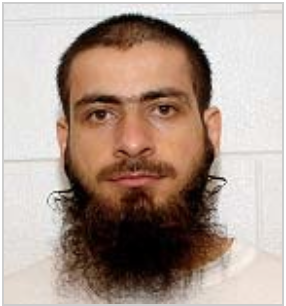
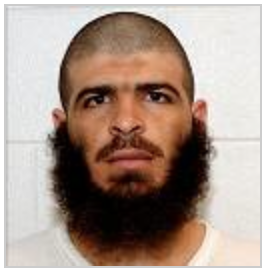
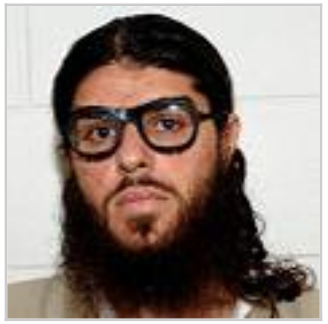
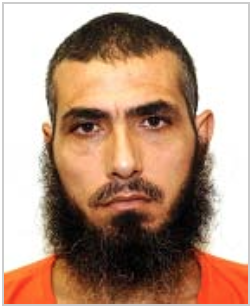
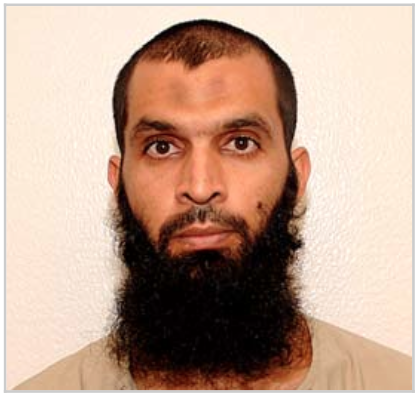







3 Comments
These are not a group of guys I want released in the western hemisphere.
What a group of “upstanding” gentlemen. Uraguay’s Marxist president has already stated,that all these gentleman can leave his country at their own choosing. Sigh.
Nice lets give them our backyard as launching pad. Because Syria is too far away. Hey Bill quick question are they allowed to bring their families? Last one is a serious question.